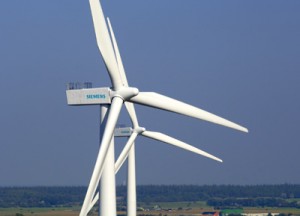It may seem blindingly obvious, but people are more likely to accept windfarms in their backyards when they actually own them.
(See my blog on a community-owned wind farm at Watchfield in Oxfordshire – http://bit.ly/kB5qKo)
A recent study in Germany showed that acceptance of wind power is very high, and even higher when local people were directly involved.
An article in Renewable Energy Focus, 24 May 2011, reported that 62% of the residents at a community-owned wind farm expressed a positive or very positive opinion on having it in their neighbourhood; only 1% had a negative or very negative attitude.
Opinion on a windfarm not owned by the community was understandably less positive, although most people (47%) said they felt neutral about it.
26% were positive or very positive while 27% were negative or very negative.
Stefan Gsänger, World Wind Energy Association (WWEA) Secretary General, said: “If we want to reach a 100% renewable energy supply worldwide with wind energy as a cornerstone, we have to make sure that local communities actively support this endeavour and that they benefit from the wind farms in their vicinity. ”
There is a strong suggestion here that “community power” is one way forward for onshore wind turbines and farms.
According to WWEA’s definition, a project can be defined as community power if at least two of the following three criteria are fulfilled:
- Local stakeholders own the majority or all of a project;
- Voting rights concerning decisions taken on the project rest with the community-based organisation; and/or
- The majority of social and economic benefits from the turbines are enjoyed by local people.
The study was carried out in Germany by researchers from the University of Amsterdam. The North German state of Schleswig-Holstein has one of the highest concentrations of wind generating capacity in Europe – if not the world.

